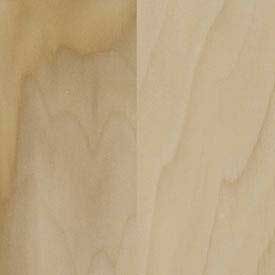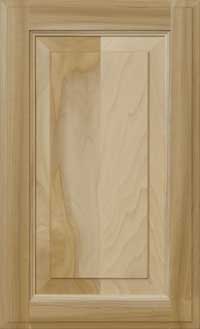Poplar
General Info and Benefits
Poplar - Liriodendron tulipifera - Other Names: Yellow Poplar, Tulip Wood
General Description
• The sapwood is creamy white and may be streaked
• Heartwood varies from pale yellowish brown to olive green
• The green color in the heartwood will tend to darken on exposure to light and turn brown
• The wood has a medium to fine uniform texture making it an often used species for paint-grade work
Physical Properties
• A medium density wood with low bending, shock resistance, stiffness and compression values
• Can be unstable and susceptible to warping and cracks
• Janka Rating System = 540 (higher Janka rating = harder wood)
Where It Grows
• Widespread throughout Eastern U.S.
Relative Abundance
• 11.2 percent of total U.S. hardwoods commercially available
• Very widely available
Did You Know?
• Poplars are rarely attacked by parasites
• Yellow poplar trees grow taller than any other U.S. hardwood species
• A member of the magnolia family
• The bark, leaves, flowers, fruit and roots contain pharmaceuticals
General Description
• The sapwood is creamy white and may be streaked
• Heartwood varies from pale yellowish brown to olive green
• The green color in the heartwood will tend to darken on exposure to light and turn brown
• The wood has a medium to fine uniform texture making it an often used species for paint-grade work
Physical Properties
• A medium density wood with low bending, shock resistance, stiffness and compression values
• Can be unstable and susceptible to warping and cracks
• Janka Rating System = 540 (higher Janka rating = harder wood)
Where It Grows
• Widespread throughout Eastern U.S.
Relative Abundance
• 11.2 percent of total U.S. hardwoods commercially available
• Very widely available
Did You Know?
• Poplars are rarely attacked by parasites
• Yellow poplar trees grow taller than any other U.S. hardwood species
• A member of the magnolia family
• The bark, leaves, flowers, fruit and roots contain pharmaceuticals
-
 PoplarPoplar is a Paint Grade material, usually characterized with a relatively straight grain pattern and allowance for mineral streaks. The color of this material ranges from white to yellowish with areas of green streaking. Since it can be unstable and occasionally prone to warping and cracks, other hardwood materials are often suggested if warping is a concern.
PoplarPoplar is a Paint Grade material, usually characterized with a relatively straight grain pattern and allowance for mineral streaks. The color of this material ranges from white to yellowish with areas of green streaking. Since it can be unstable and occasionally prone to warping and cracks, other hardwood materials are often suggested if warping is a concern.
